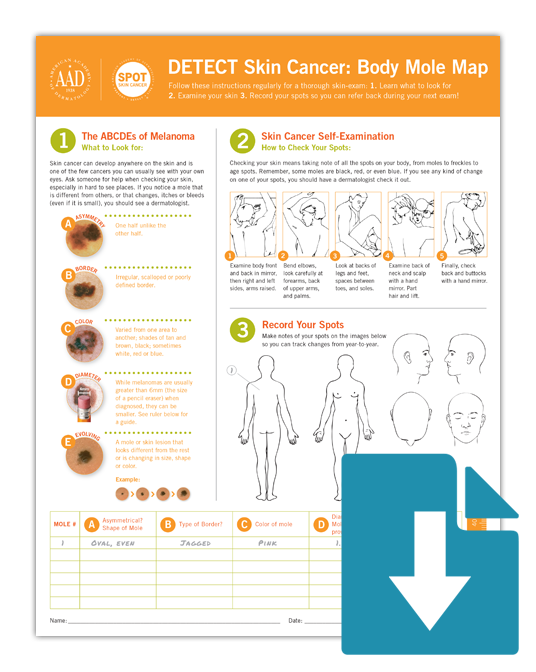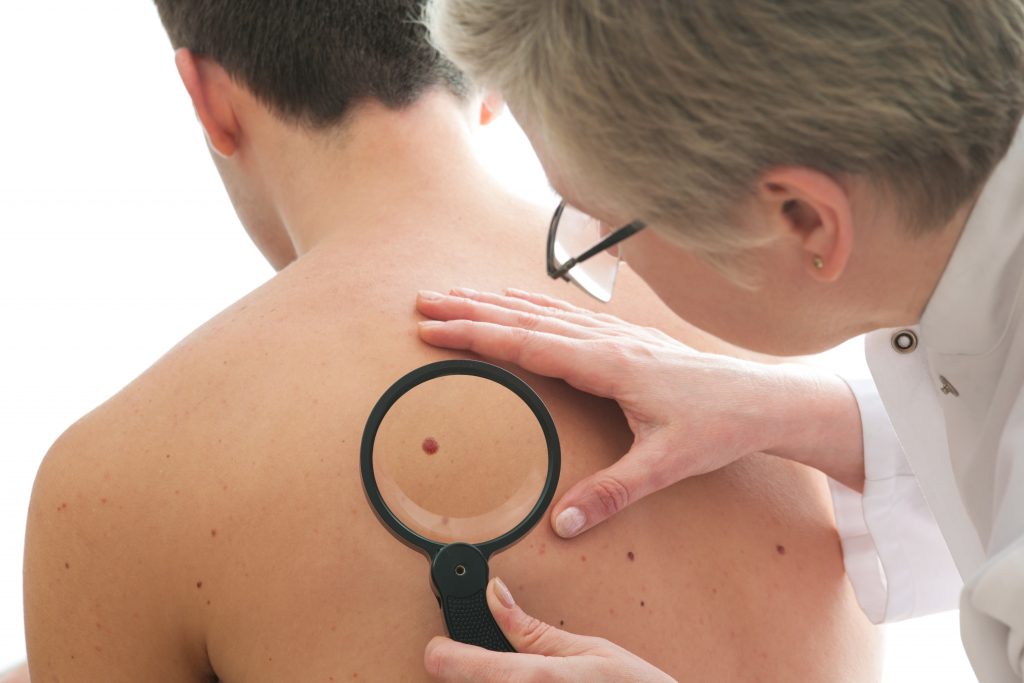Annual Skin Examinations from U.S. Dermatology Partners
What Is an Annual Skin Examination?
Annual Skin Examinations are yearly scheduled skin exams with a dermatologist. Did you know that skin cancer is the most common form of cancer in the U.S.? In fact, it is estimated that one in five Americans will develop skin cancer in their lifetime. Sun damage to the skin is cumulative over a person’s lifetime, so the average risk of skin cancer also increases as our life expectancy gets longer.
Just as you schedule your annual physical or trip to the dentist, it is important to conduct a self-examination of your skin each month and schedule a professional annual skin examination once a year. Skin cancer is a treatable condition, but early detection is key.
Find This Service Near You
Why Are Annual Skin Examinations Important?

Skin self-examinations should be performed monthly.
While skin cancers are almost always curable when detected and treated early, the best line of defense is to prevent them from occurring in the first place.
A recent study in The Journal of the National Cancer Institute found that skin self-exams could reduce the risk of advanced disease among melanoma patients and potentially decrease melanoma mortality by up to 63 percent. Skin exams conducted by physicians and dermatologists are also incredibly effective.
The Journal of the American Medical Association reported that melanomas found by physicians tend to be thinner (thus at an earlier stage, and more easily cured) than those found by patients on their own.
Skin self-examinations should be performed monthly and if you find something irregular (a mole that is asymmetric, irregular with a scalloped border, or of varied color, for example), you should consult with your dermatologist, who may suggest a full body screening exam.
The American Academy of Dermatology’s Body Mole Map can help you understand the most effective ways to find and monitor any suspicious moles on your skin.

Take pictures for reference and ask for help when checking your skin, especially in hard to see places.
- Examine your body front to back in a mirror, then your right and left sides, arms raised.
- Examine the back of your neck and scalp with a hand mirror. Part hair for a closer look at your scalp.
- Bend your elbows, look carefully at your forearms, the backs of your upper arms and palms.
- Check your back and buttocks with a hand mirror.
- Finally, look at the backs of your legs and feet, as well as the spaces between your toes and your soles.

Dermatologists have special training that includes the diagnosis and management of skin cancers.
Even if you do not find any irregularities on your own, you should schedule a skin examination with your doctor at least once a year. Just like an annual dental exam, an annual skin exam ensures that you are catching any dermatology problems in their earliest stages.
At the very least, your primary care physician should evaluate your skin during your annual health examination. If you have a question about your skin that he or she cannot answer, a referral to a dermatologist is appropriate.
If you have a history of skin cancer or a high number of moles, it is important to see a dermatologist for regular skin examinations at intervals ranging from three months to annually.
How Are Annual Skin Examinations Performed?

If you have a history of skin cancer or a high number of moles, it is important to see a dermatologist for regular skin examinations.
Dermatologists have special training that includes the diagnosis and management of skin cancers. They are trained to find spots that you may have overlooked during your own examination.
Your annual skin examination with your doctor will take about 15 minutes, and you should mention any spots you are concerned about or any changes that you may have noticed.
This is also a good time to review with your dermatologist what to look for during self-examinations, such as any changes in the size, color, borders, or shape of a mole. If your doctor finds a spot that he or she suspects could be cancer, it will be biopsied and sent to a pathology lab for review.
During a biopsy, a sliver of tissue is removed for evaluation by a pathologist who will confirm (or refute) whether the spot is cancerous.
Virtually any notable change in a mole should be checked out, so if your doctor orders a biopsy, don’t panic. When dealing with skin cancer, it is always better to be proactive.
- See Also
- Skin Cancer
- Actinic Keratosis
- Annual Skin Examinations
- Basal Cell Carcinoma
- Cryotherapy
- Melanoma
- Mohs Surgery
- Squamous Cell Carcinoma
- Sunscreen
*Results may vary by individual
